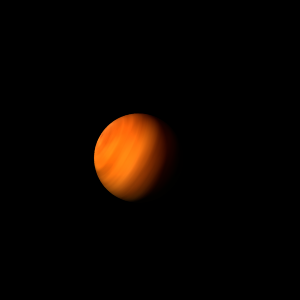|
|
Space Astro
|
Info for exoplanet "Lenebe"
| Scientific (actual) data |
|---|
| Name | OGLE-2017-BLG-1375 b |
| Planet status | Confirmed |
| Planet mass | 10.33 |
| Semi major axis | 2.97 |
| Discovered | 2020 |
| Updated | 2020-08-24 |
| Publication | Published in a refereed paper |
| Detection type | Microlensing |
| Mass measurement type | Microlensing |
| Star name | OGLE-2017-BLG-1375 |
| Right ascension | 269.15° |
| Declination | -30.31° |
| Star distance | 3790 |
| Star mass | 0.77 |
| Wikipedia article | OGLE-2017-BLG-1375 b |
Back
| |
| Fictional info (?) |
|---|
| Suggested name | Lenebe |
| Planet type | Huge cold gas giant |
| Its north and south poles, therefore, lie where most other planets have their equators. |
| Atmosphere | Xenon | 99% |
| Atmospheric pressure | 0.05 bar |
 |
| Moon | Sadra'beame | Small almost round crater-filled moon |
| Mabanan | Huge round oceanic moon |
| Drafran Umrion | Large slightly egg-shaped rocky moon |
| Gellind | Small potato shaped oceanic moon |
| Makarir'cali | Very small potato shaped oceanic planetoid |
| Tiaca-kinle | Large irregular rocky asteroid |
| Nesoor | Large irregular rocky comet |
| Hicar-dramar-sete | Small round crater-filled planetoid |
| Teasao-cal | Medium-sized slightly egg-shaped rocky moon |
| Google search for Lenebe |
|
Website by Joachim Michaelis
|
|
|
|